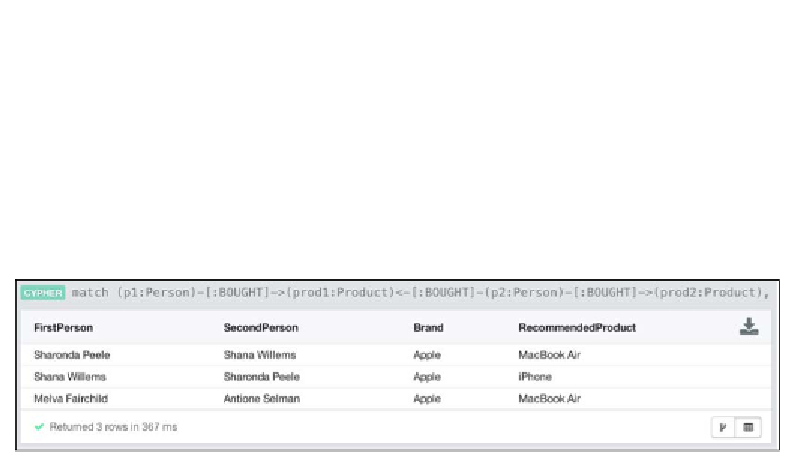Database Reference
In-Depth Information
What we are doing here is bringing the three aspects of our pattern together in the
match clause. Here are the different parts explained:
• Theirstpartoftheclauseensuresthattwopeoplehaveboughtcommon
and
different products
• The second part ensures that the two people are siblings
• The third part ensures that the products recommended would be based on
the loyalty to a particular brand
Running this query is interesting. The result is shown in the following screenshot:
Compound recommendations
We immediately see that we get only three matches to this sophisticated pattern;
however, as mentioned earlier, we have reason to believe that these recommendations
will be more powerful.
This concludes our discussion of these core use cases around recommendations.
Before closing this chapter, we would, however, like to spend a bit more time on
some related topics around recommendations.
Business variations on recommendations
The entire principle of a recommender system, as we described before, can be
generalized into a different kind of system that has many other business applications.
Some people would call it a "rules engine", which does some kind of sophisticated
if-this-then-that
matchingandiguresoutwhatactiontotakeattheotherendofthe
decision tree. Other people may call it a pattern-matching system, which could be
applied to any kind of pattern and tied to any kind of action. Most likely, graph
databases such as Neo4j hold some characteristics of all of the above and provide
you with an interesting infrastructural optimization that could serve well.
Before wrapping up this chapter, we would like to highlight some use cases that are
extremely related to the recommender system use case. Let's go through some well
-known sweet spot applications that essentially use the same principles underneath.


